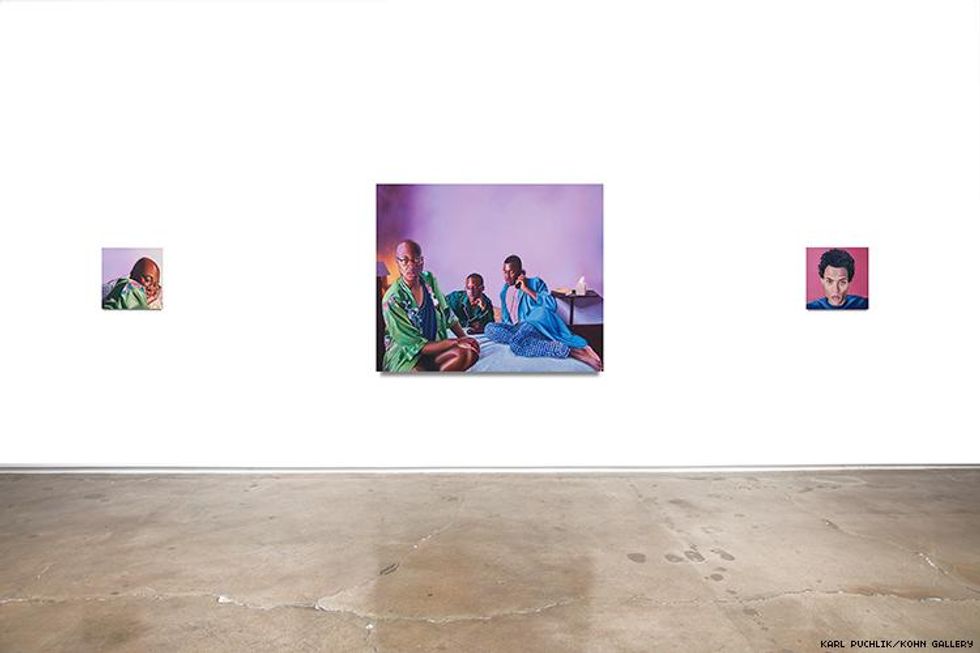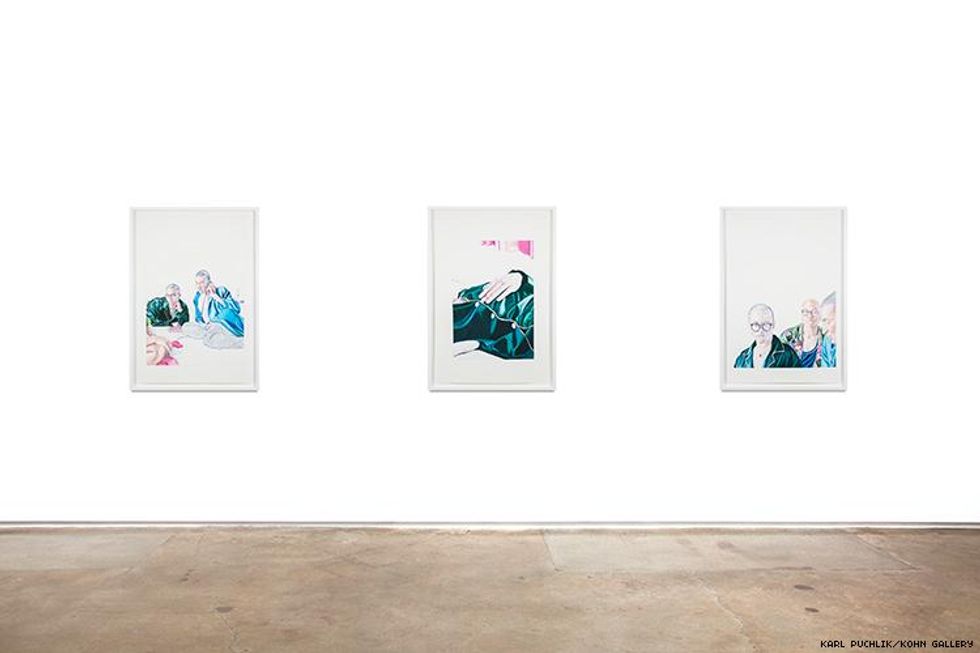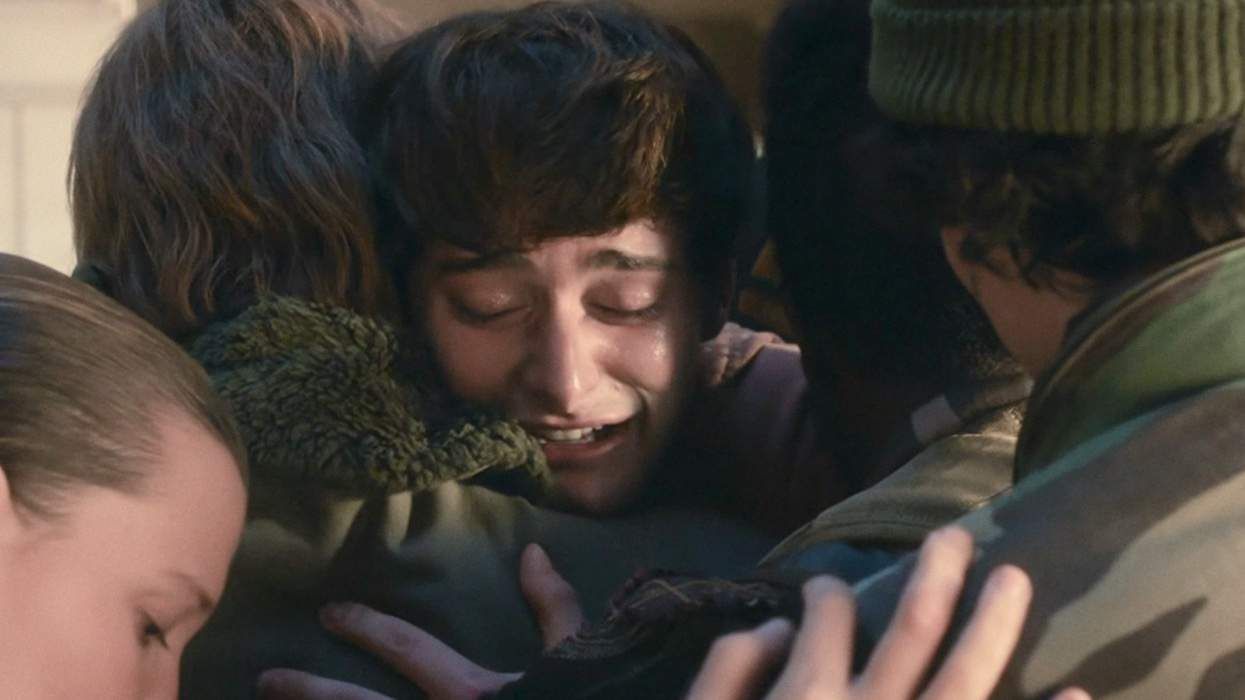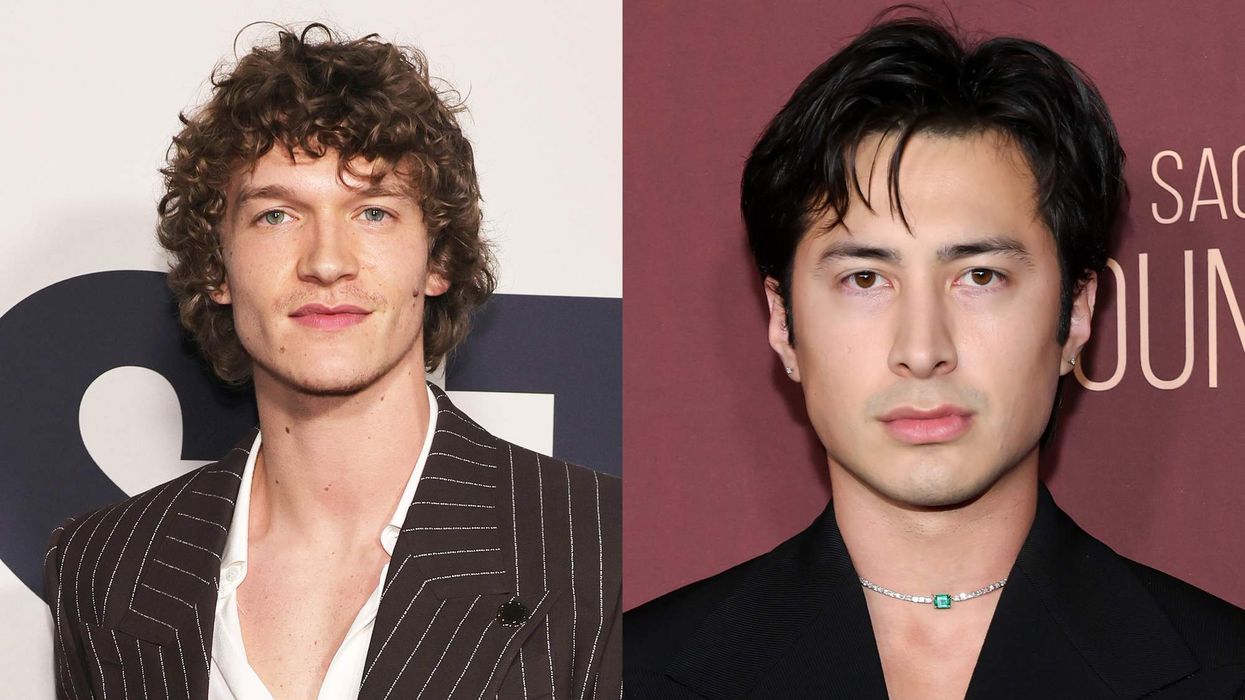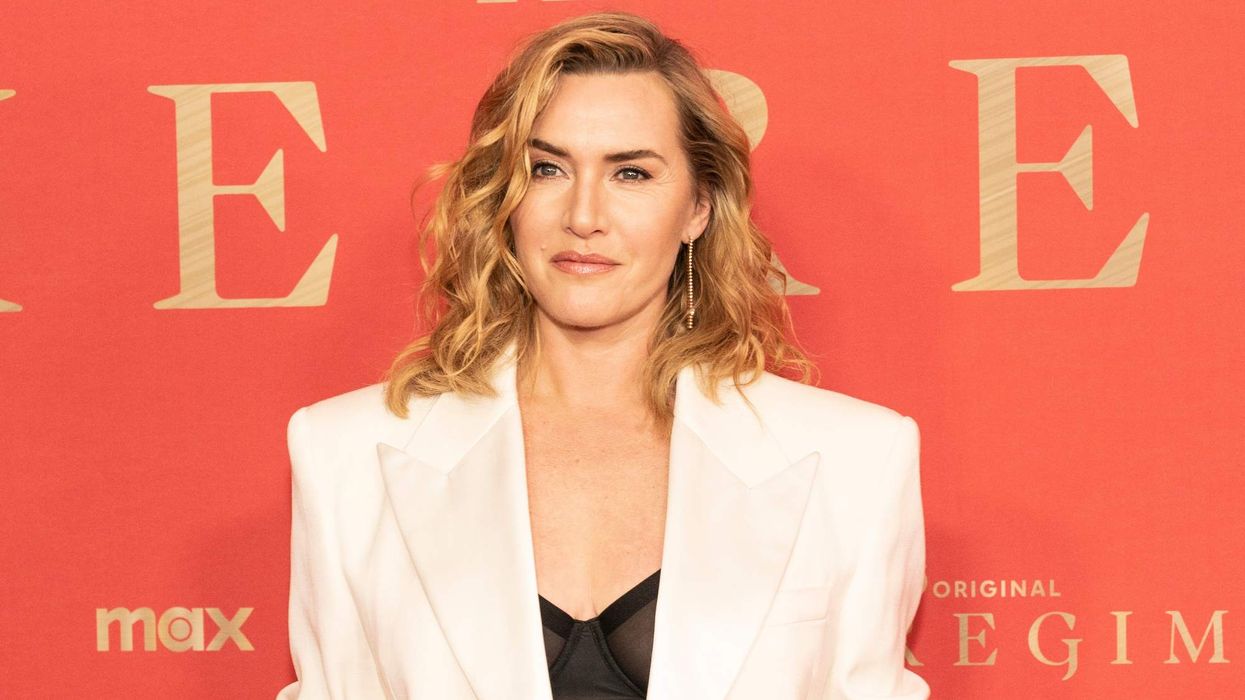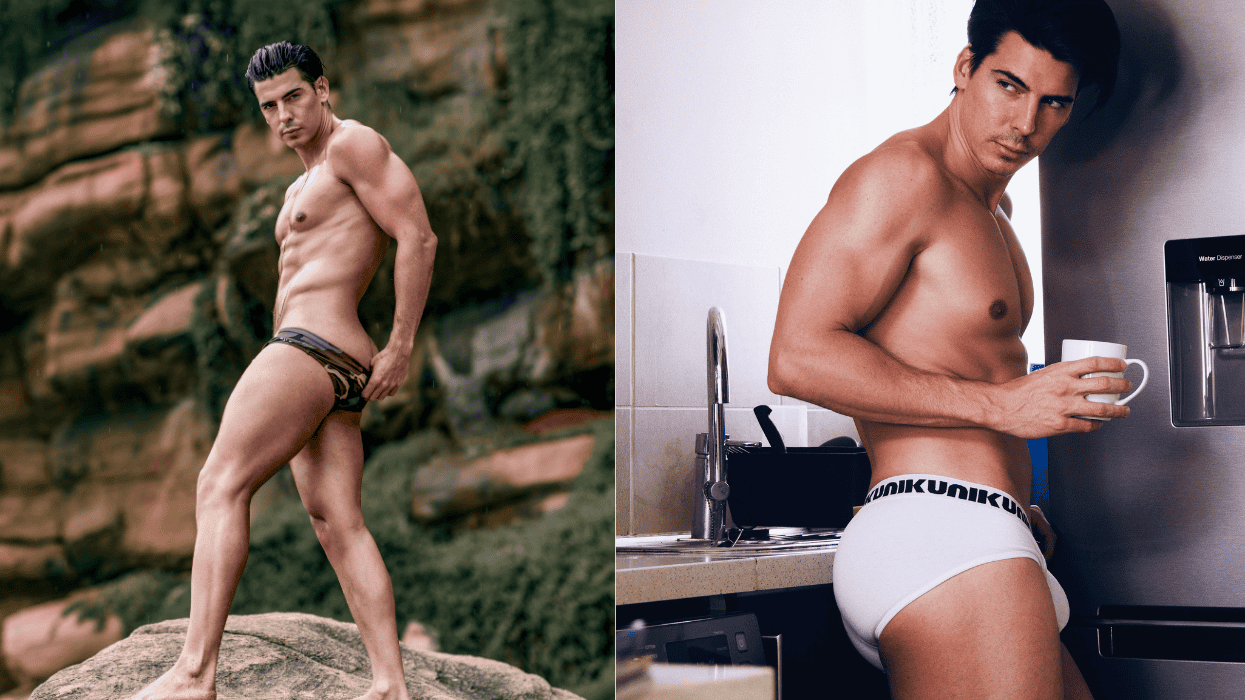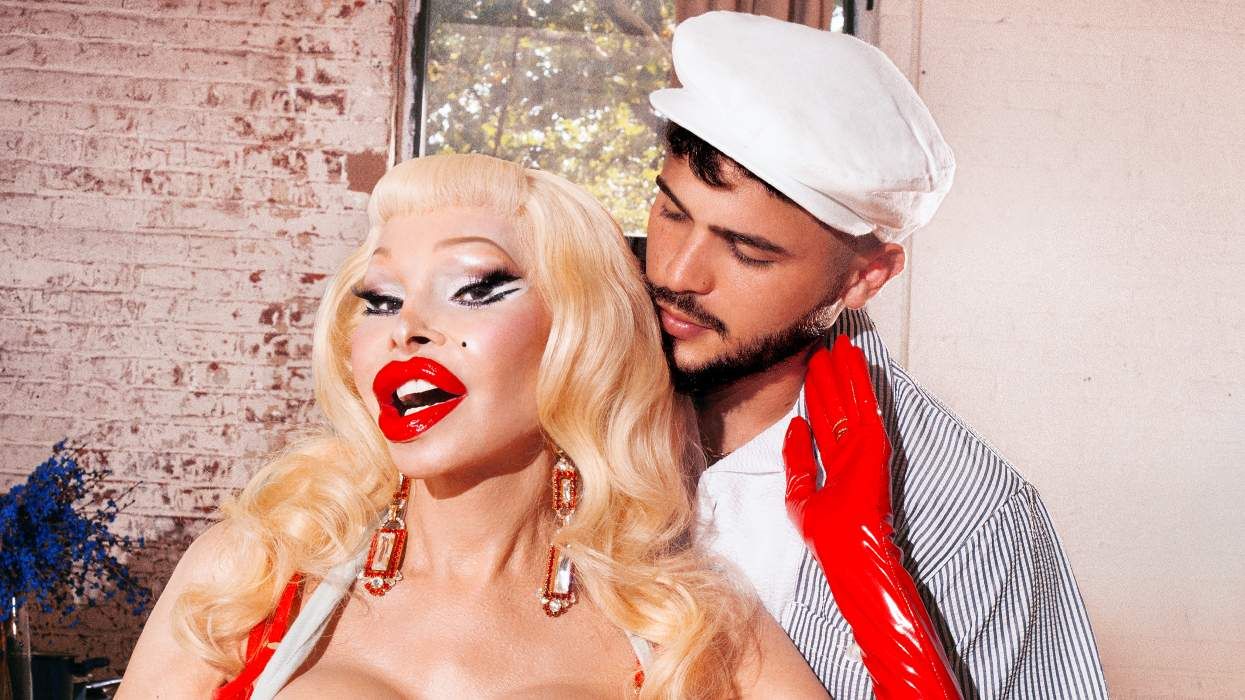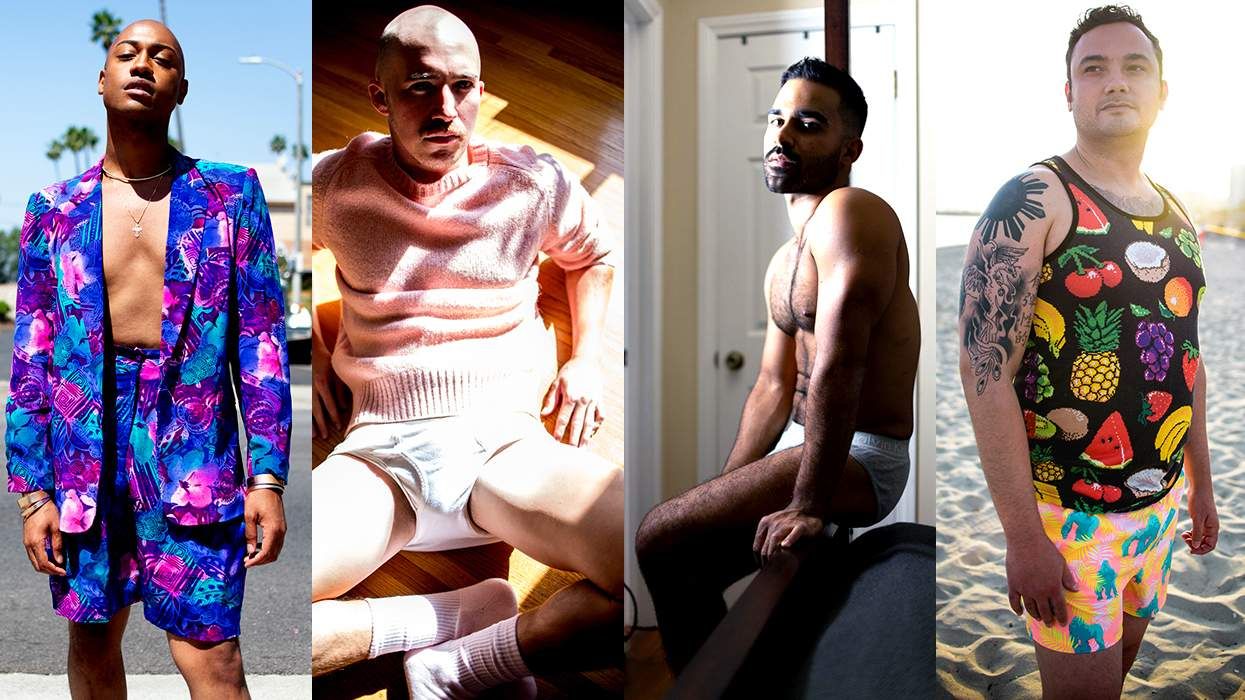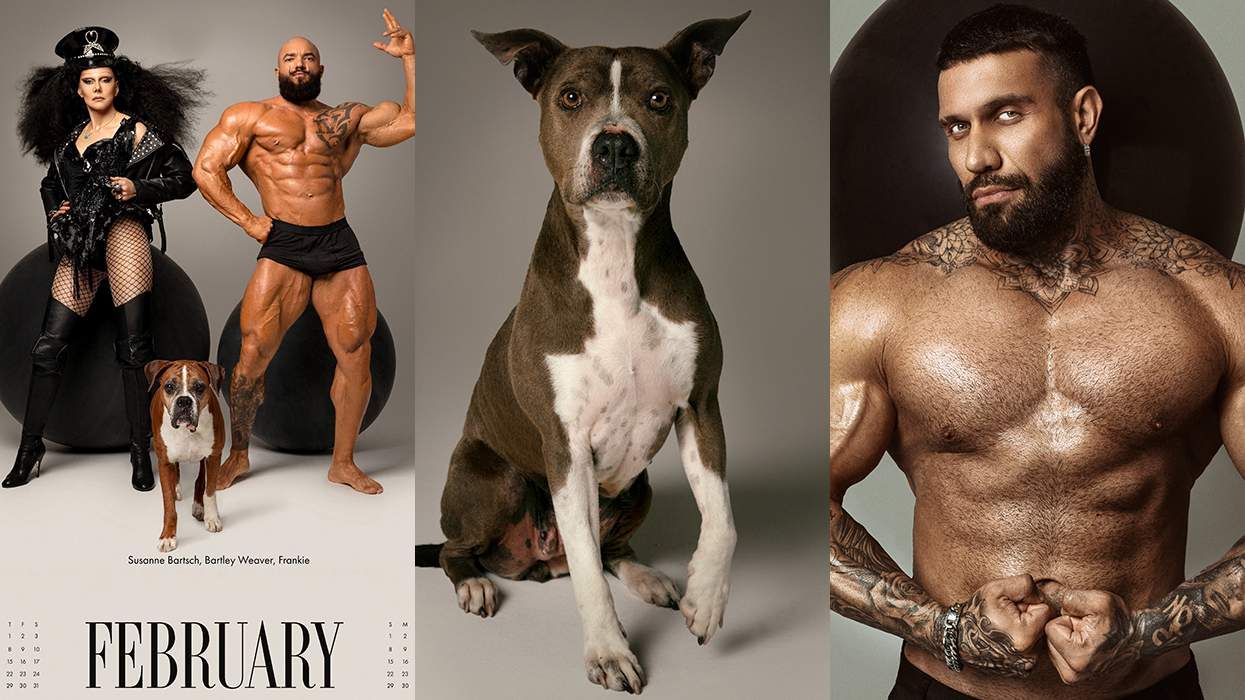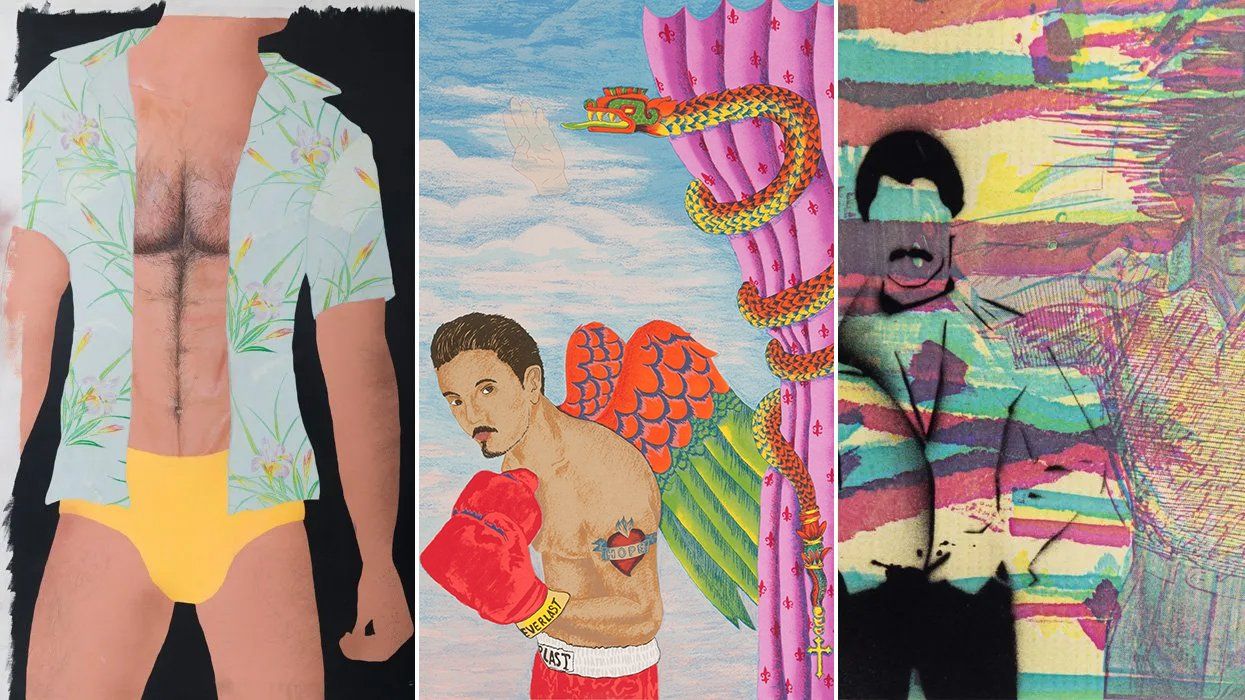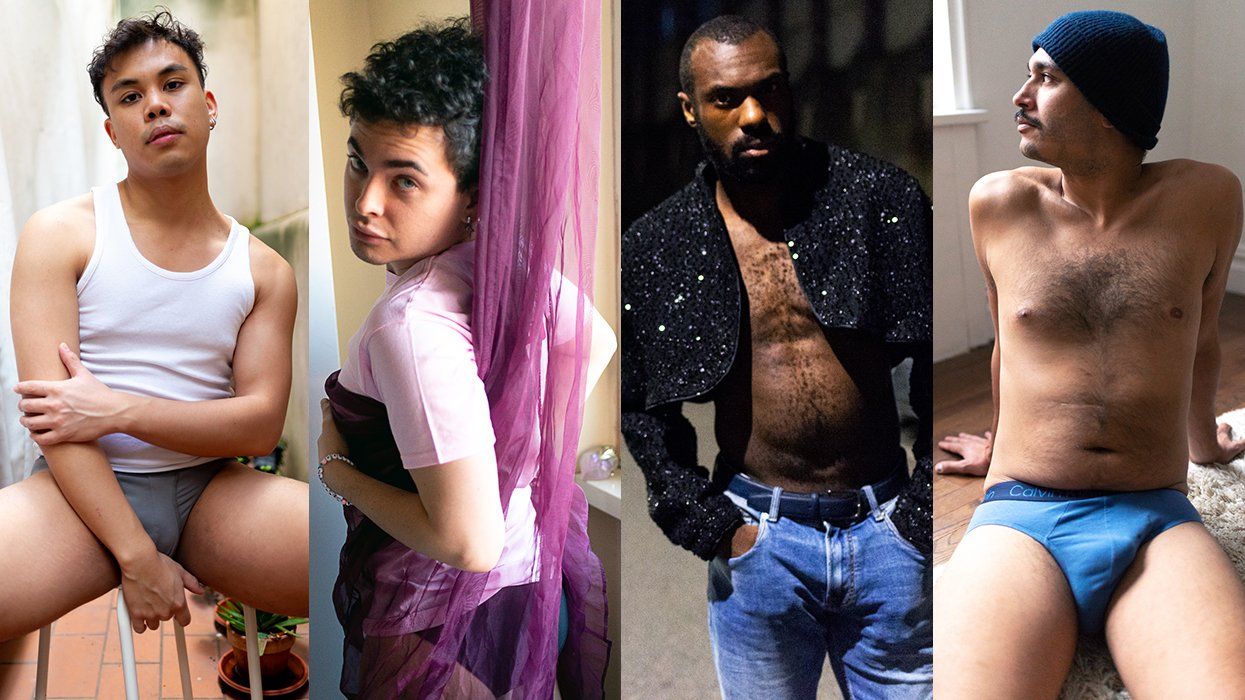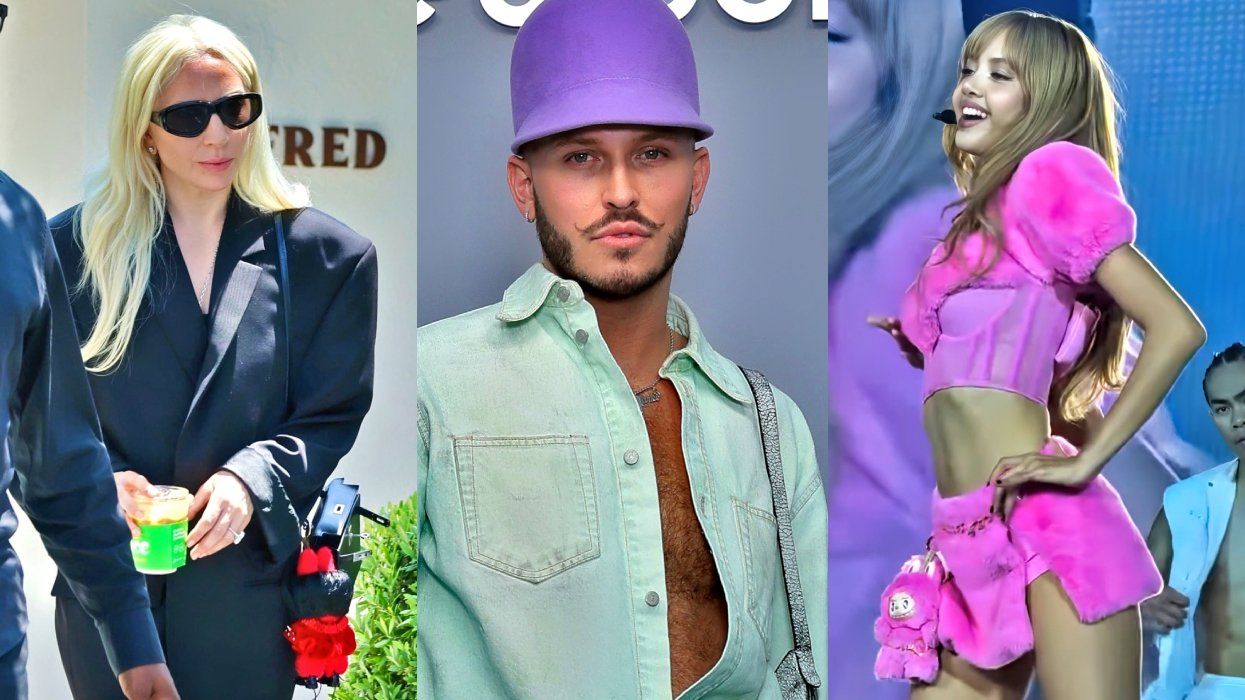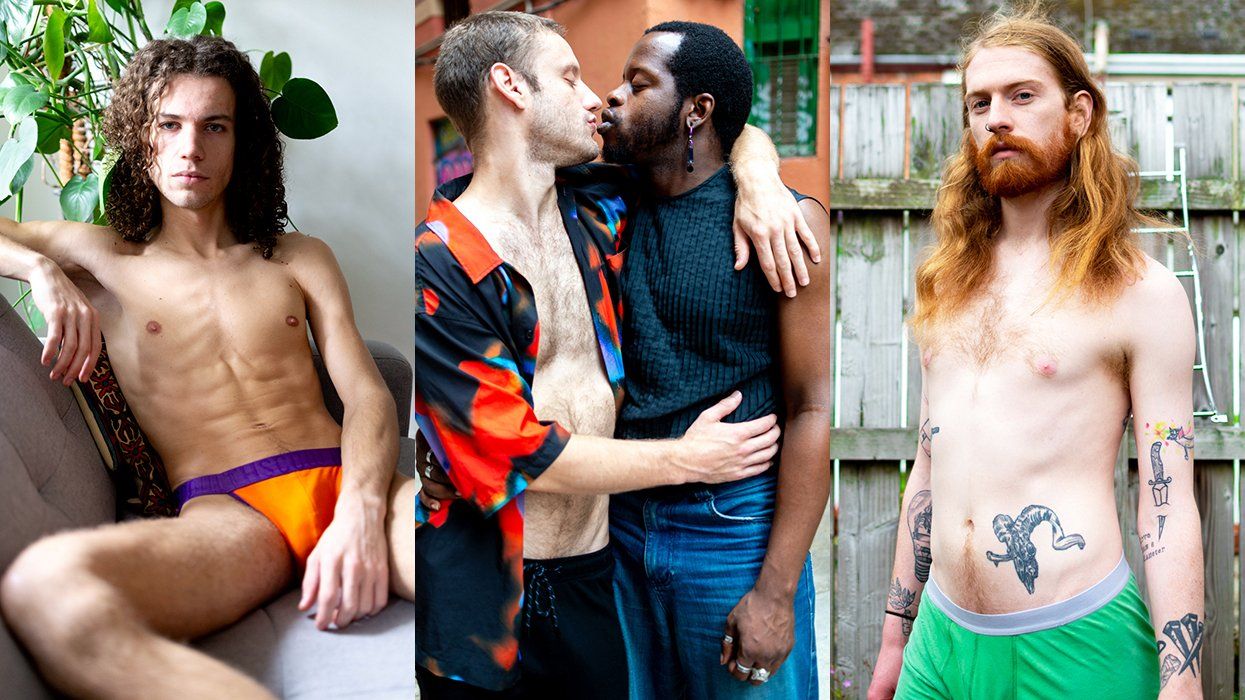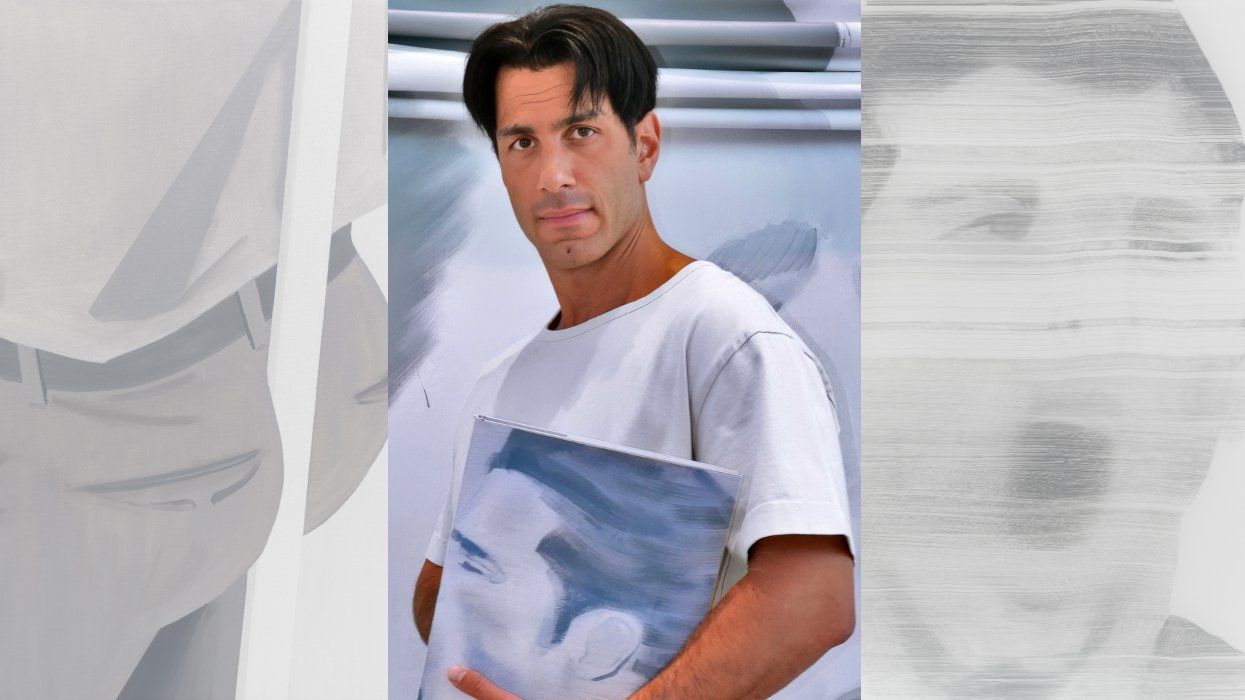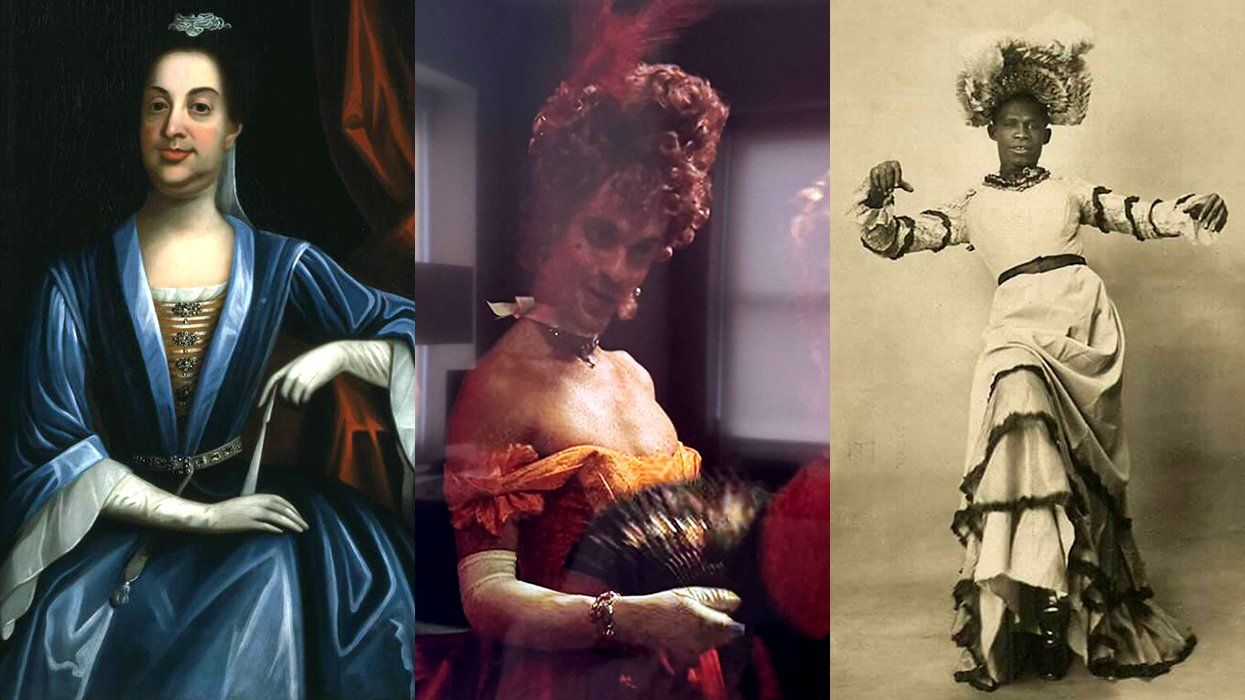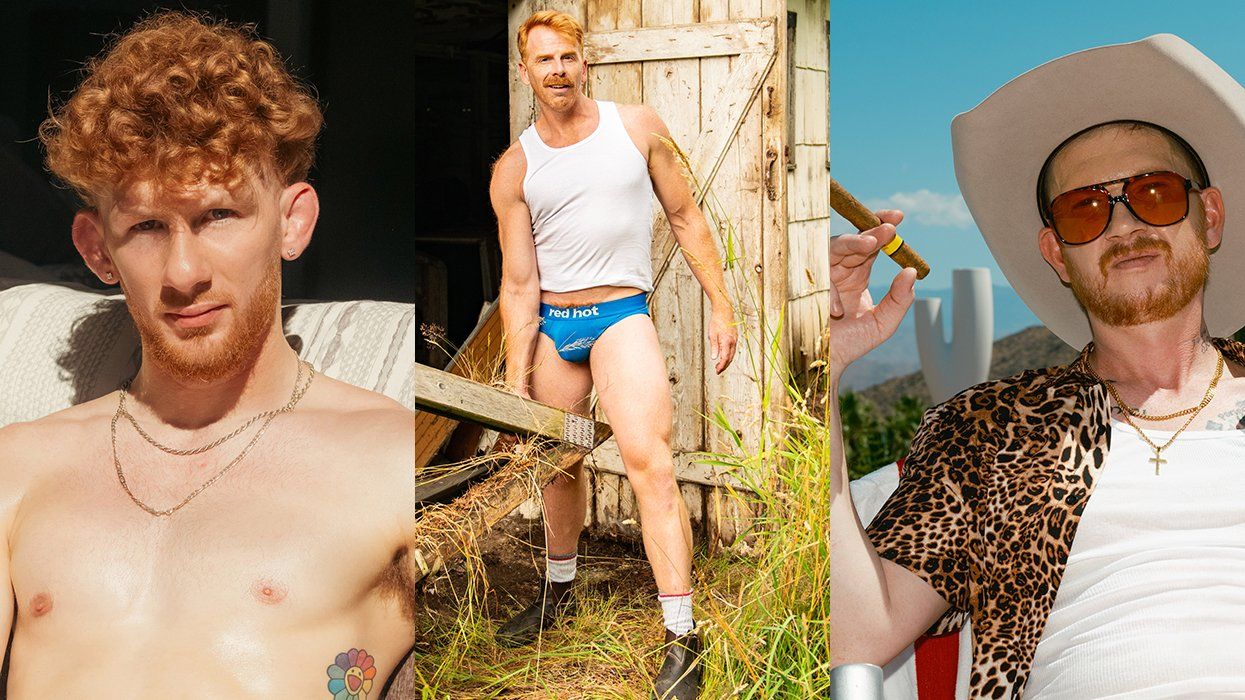There's something different about Jarvis Boyland's work. Walking the exhibition rooms of Los Angeles' Kohn Gallery -- where Boyland's "On Hold:" exhibit is on view through Thursday, May 23 -- I was arrested by his portraits of Black queer men. Though simple and straightforward, there's a complexity in the color story, particularly in his subject's skin tones. They were rich and nuanced and complex, both imagined and realistic, and unlike any paintings I've come into contact with.
Three days later, I shared these observations with the artist-in-residence at University of Chicago over the phone. "I think Black flesh is so complex," he said, "and it's so beautiful."
"And 'Black' just can't even begin to describe all of the many shades and hues that I see when I look at Black flesh. So, I try to render the flesh [by] sort of really looking at it, really feeling it, and really making it all a compliment, complimenting the people [pictured]," the 24-year old said.
"Jarvis Boyland: On Hold:" is the Memphis native's first solo exhibition and includes a suite of new paintings. (It's displayed in the gallery alongside Heidi Hahn's "Burn Out in Shredded Heaven.") Ahead of its close, we spoke about the importance of portraiture, centering Black queer bodies in our intimate spaces, and from where he gets his inspiration.
Talk to me about how you first got interested in paintings.
My mom says that I've been creating since the age of three. And I do remember being that kid who was always with a coloring book, and sort of immediately coloring inside of the lines, even at that age. It's just something that I kept with and I would just draw little things and go to museums as a kid. Ultimately, I went to a creative and performing arts school for middle school that honed my ability to use different mediums to create subjects and narratives.
I believe the first show that I saw was a Degas show at the [Dixon Gallery & Gardens] museum in Memphis. Degas was an impressionist, painting these ballet dancers. I took a liking to that, because, obviously, I was just a little gay kid. I think from then on I became really serious about it and that led to pursuing art and painting and drawing in high school, and then I decided to major in painting and drawing as an undergrad.
How would you say being from Memphis has inspired you and inspired your work?
It's definitely embedded into everything that I make and do, and the person that I am. But it's a fraught relationship. I am very grateful for my southern upbringing, and I wouldn't trade it for the world, but with that came a lot of tension and awkwardness around conversations dealing with homosexuality, being raised by a Christian, Baptist family. A lot of that discomfort and ambivalence is fueled by my relationship to the South. But, on the other hand, I think a lot of sensibilities towards domesticity and grooming are things that I value, and I'm thankful for my grandmother, and my mom, and my aunts who sort of instilled those [in me].
You mentioned domesticity. For this show, the majority of the paintings take place in a bedroom. And I was looking into some of your other work, and they all center primarily on Black men in apartments or bedrooms or their homes. What about that type of space intrigues you?
That goes back to my upbringing in the South, and the sort of myopic idea that I had about what could be a domestic union. I always viewed that as being a man and a woman, my parents, until I went to Chicago. I was a Mellon fellow at the Art Institute of Chicago in 2015 and then I began meeting these Black, gay men, and being invited to their homes, and being really floored that gay men were living together. Around that time was when gay marriage was also legalized, so I was really fueled by that, and then fueled by the Pulse Nightclub shooting in 2016... I was just thinking of how home can both be embodied through the figures, and how home literally could be interpreted and reimagined through these paintings for myself.
So many of the pieces in this particular show, they're so rich and so vibrant. Like, even the way you colored all of their skin tones. How did you come to that idea, to finding those particular colors?
At this moment, and I think this work has been kind of a catalyst for that, I'm really focused on the '70s as this time of sexual promiscuity that predates the AIDS epidemic of the '80s... I'm really interested in that palette and that monotone way of both furnishing the home, but also in terms of apparel, and then using these Black, gay bodies to be representations. But also, with that, I think we also must think about statistics relating to Black, gay bodies and HIV.
And then as someone, obviously, thinking and making a living in 2019, I'm trying to sort of merge these times through the work, creating both somewhat fictitious scenes that I also want to elevate. Through the color, I think you're able to understand that these scenes are real, but there's a sense of idealism, there's a sense of imagination, there's a sense of time being suspended and contemplated. But also there's the light source in those paintings, which is the candles that I wanted to sort of make larger than they physically are in the works.
Alongside the paintings are drawings of the same works. What would you say is the utility and the importance for you of having them displayed too?
This work started at a residency I did this summer, at the Skowhegan School of Painting and Culture in Maine. That was a nine week program and the conditions were really just so extreme that it was impossible for me to paint anything while I was there, so I took advantage of that time to draw, to take a break from painting, to think, to enjoy my summer. The drawings sort of became a way that I could sort of creep back into painting when I got back to Chicago.
But also I often talk about sensitively rendering Black flesh in my work in the drawings, but like more of a way in which you can see that. I think there's a softness and a delicacy to the way that I'm approaching the flesh there -- using a different material, color pencil and oil pastel, to achieve something on a much more intimate scale than the paintings have, even though I feel that they are intimate on that sort of grander scale. The drawings, I think, have allowed me to think about other ways that I could achieve that effect, which is something that I haven't done or exhibited before this show.
Who are the men featured in show to you?
D'Angelo [Lovell Williams is] a good friend of mine. Cameron Clayborn is also the other guy in the scenes of three, and they were both artists at Skowhegan with me this summer. Just through talking with them, it became clear that we all grew up in the South and had spent some time in Memphis. I wanted to make this work with them because to, again, talk about this relationship to the South without it necessarily being overt. And then also, I just [wanted to push against] this idea of competition and rivalry, which is just the nature of this residency, and I think that can be present amongst a group of artists in this seemingly successful, popular time of making and creating, in the age of internet. Then that other guy, Keenan, is my boyfriend.
I also want to say that I think it's important to position Black men in my work considering one another, as opposed to non-Black bodies, because that's just not a conversation that I feel is ultimately more important. I think about the idealization of intimacy, and the radical notion of Black men loving one another still being a radical act in 2019.
Now, why portraits?
Portraits are really important to remember people, and I think the portraits are a way for me to contemplate my relationship to Black people. If you look at the history of portraiture, Black people have always been present in the artwork, but the makers of them may not have had the sort of access or privileges to be the narrators of those folks. I think that is most important, that painting Black, gay people, is something that was important to me. Because one of my favorite, artists is David Hockney who makes these very beautiful images of queer men in domestic spaces that I always had these visceral responses to. But inserting people who look like me in them, and privileging them, favoring them, looking at them look at me through this work, is something that is important. It's vital to the canon.
I'm always interested to know how the white gaze, or the fact that a lot of Black people seemingly don't frequent galleries, impacts the work by Black artists. How does it impact you?
I really don't care about the white gaze at all... But I think it's really amazing that when you go into a space like that, a museum, either the people on the wall are not Black people or the people walking past those paintings are not Black people. But with this show, with me being a Black artist, I can kind of make a change slightly. I think [the gallery] said this opening was the youngest crowd that they've seen there in a while, and there were definitely tons of Black people and tons of Black, gay people there. That's the sort of change that I think is made when the author of these people, these subjects is a Black person. It's really great to see Black people supporting me and supporting the work. That's not to say that white people can't see this and engage with it, but it's not necessarily to appease them.
What does it mean, for you, to be 24 and you have your first solo exhibition?
I think I'm still sort of processing that. I am obviously blessed and grateful for this opportunity. I think the day that they came and got the paintings from my studio in Chicago, it was the one-year anniversary of me being rejected from grad school.
But I'm a hard worker and I am just trying to celebrate myself, and through all of this, understand that I got this show because I have done that work and people are listening, and there's a need and a desire for me to keep making it. So, I'm really fortunate for that... Going through art school you're told that this is never really going to work out, so there's no reason to be doing it, but you should do it anyway. So, for it to immediately "pay off" for me has been something that I think about a lot. I just gotta keep going.
RELATED | Here's How Eurocentric Beauty Standards Broke the Art World



